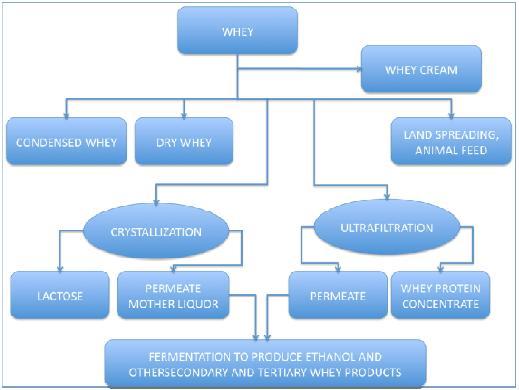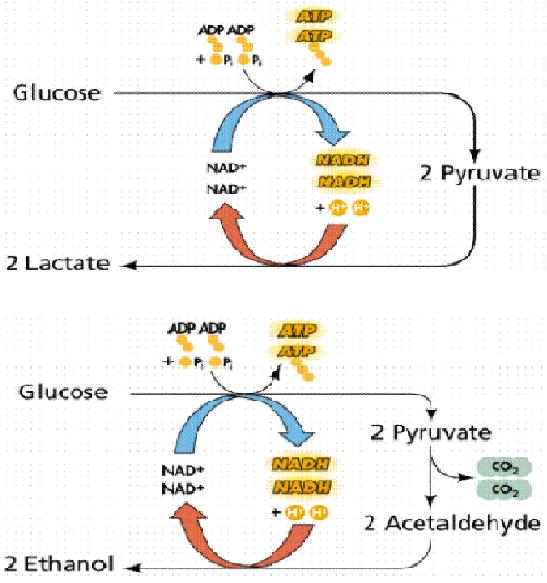Team:UNIPV-Pavia/Project/Motivation
From 2009.igem.org
(l) |
(l) |
||
| Line 46: | Line 46: | ||
<br> | <br> | ||
| - | + | <i>B.O.D. 5 (Biochemical Oxigen Domand 5)</i> | |
| - | + | ||
It is an index to measure the oxygen need within 5 days (in mg/l), for the oxidation processes of the organic substances present in waste performed by microorganisms. | It is an index to measure the oxygen need within 5 days (in mg/l), for the oxidation processes of the organic substances present in waste performed by microorganisms. | ||
| - | |||
| - | + | <i>C.O.D. (Chemical Oxygen Demand)</i> | |
It is a measure of the amount of oxygen used to oxidize organic and inorganic compounds contained in a water sample. It provides a global measurement of all chemicals in the water that can be oxidized and so it is an indirect index of pollutants in a water sample. | It is a measure of the amount of oxygen used to oxidize organic and inorganic compounds contained in a water sample. It provides a global measurement of all chemicals in the water that can be oxidized and so it is an indirect index of pollutants in a water sample. | ||
| - | |||
| - | |||
| + | <br> | ||
Disposal of whey is a serious problem even if for a long time this product has been discharged into water streams, used for land spreading or to feed farm animals, since B.O.D. reduction treatments require a great economic effort. | Disposal of whey is a serious problem even if for a long time this product has been discharged into water streams, used for land spreading or to feed farm animals, since B.O.D. reduction treatments require a great economic effort. | ||
| Line 65: | Line 62: | ||
|[[Image:Pathway_degradation.JPG|thumb|600px|Whey processing: added-value substances like whey proteins, dry whey and, in some cases, lactose are extracted and residual lactose can be fermented in ethanol.]] | |[[Image:Pathway_degradation.JPG|thumb|600px|Whey processing: added-value substances like whey proteins, dry whey and, in some cases, lactose are extracted and residual lactose can be fermented in ethanol.]] | ||
|} | |} | ||
| + | |||
| + | <br> | ||
| + | However, thanks to the new technologies, it is possible to obtain added-value substances to employ in pharmaceutical and alimentary industry, through membranes and filtration. | ||
| + | The main substances extracted are whey-proteins, used in fortifying more and more foods, beverages, infant formulas, nutraceuticals and lactose, which has somewhat limited applications in food products, for its low digestibility and poor solubility. | ||
| + | Moreover, lactose extraction from whey is an unprofitable process because the cost of the extraction is higher than the economic value of lactose itself. As a consequence, the residual liquid of cheese whey remains a special waste because of the high lactose concentration (~4.5%). | ||
| + | For this reason, we aim at finding a new way to valorize residual lactose present in whey after extraction of other nutrients and precious substances, using fermentation. In this way, B.O.D.5 and C.O.D. parameters would be decreased, cheese whey would not be treated as a “special waste” and industries would take profit from fermentation products. | ||
| + | |||
| + | =Fermentation= | ||
| + | |||
| + | Fermentation is an anaerobic biochemical process, in which an organic compound is reduced to ethanol or lactic acid (typically) as final products in order to produce NAD<sup>+</sup>, a coenzyme involved in the standard energy-producing pathway, that is glicolysis. Fermentation is wide-spread in living beings: it is the only energy production mechanism coupled to glicolysis in prokaryotes and is also present in eukaryotes were it is an alternative to the more efficient oxidative phosphorilation. | ||
| + | |||
| + | The starting compound in the fermentation pathway is pyruvate, which is usually produced from sugar substrates, such as glucose and lactose through the glicolysis pathway. In lactic fermentation, pyruvate is directly transformed in lactate by the enzyme Lactate Dehydrogenase. | ||
| + | |||
| + | In alcoholic fermentation, pyruvate is first transformed in acetaldehyde by pyruvate decarboxylase, with the production of a carbon dioxide molecule and then in ethanol by the enzyme alcohol dehydrogenase. From a molecule of glucose, 2 molecules of ATP, the "molecular unit" of energy inside the cells, are produced. | ||
| + | |||
| + | {|align="center" | ||
| + | |[[Image:Pathway_fermetation.JPG|thumb|600px|]] | ||
| + | |} | ||
| + | |||
| + | |||
</td> | </td> | ||
</tr> | </tr> | ||
</table> | </table> | ||
Revision as of 10:46, 21 October 2009

|
|
|
Motivation |
|||
|
WHY WHEY?Whey is a component of milk, which separates after curdling when rennet or an edible acidic substance are added. It represents one of the main by-products of the cheese and casein industry. It is a mixture of different substances, some of which potentially valuable if extracted and individually processed. As reported in the following table, the main solid components of whey are soluble proteins, lactose, mineral salts and vitamins. In this section a summary of "Ethanol? Whey not!" project results is reported. For more information you can visit Parts Characterization section, in which you can find a documentation for each every single BioBrick involved in this project. This liquid waste is commonly regarded as the "environmental problem" of the cheese factories, which generally produce wheys of different content depending on the specific productive process and kind of cheese. In Italy, as in other countries with an important casearian tradition, the amount of whey produced every year is huge (8-10 million m^3/year). Differently from other countries in the central/nord Europe, in Italy the 85% of the milk produced is transformed in cheese by an high number of small/medium creameries, spread on the whole territory. Until some year ago, whey was given to pigs or introduced directly into the river systems, thus contributing to the organic pollution of environment and giving rise to water asphyxia. Its high nutrient load, in fact, causes the proliferation of microorganisms which deplete oxygen levels in the surface water systems. For this reason, the Italian law classifies whey as "special waste". Two indicators are commonly used to measure the nutrient load: B.O.D.5 and C.O.D..
B.O.D. 5 (Biochemical Oxigen Domand 5) It is an index to measure the oxygen need within 5 days (in mg/l), for the oxidation processes of the organic substances present in waste performed by microorganisms. C.O.D. (Chemical Oxygen Demand) It is a measure of the amount of oxygen used to oxidize organic and inorganic compounds contained in a water sample. It provides a global measurement of all chemicals in the water that can be oxidized and so it is an indirect index of pollutants in a water sample.
Nowadays, it is well known that the management of the whey disposal is expensive and that whey is considered as a troublesome reject substance.
FermentationFermentation is an anaerobic biochemical process, in which an organic compound is reduced to ethanol or lactic acid (typically) as final products in order to produce NAD+, a coenzyme involved in the standard energy-producing pathway, that is glicolysis. Fermentation is wide-spread in living beings: it is the only energy production mechanism coupled to glicolysis in prokaryotes and is also present in eukaryotes were it is an alternative to the more efficient oxidative phosphorilation. The starting compound in the fermentation pathway is pyruvate, which is usually produced from sugar substrates, such as glucose and lactose through the glicolysis pathway. In lactic fermentation, pyruvate is directly transformed in lactate by the enzyme Lactate Dehydrogenase. In alcoholic fermentation, pyruvate is first transformed in acetaldehyde by pyruvate decarboxylase, with the production of a carbon dioxide molecule and then in ethanol by the enzyme alcohol dehydrogenase. From a molecule of glucose, 2 molecules of ATP, the "molecular unit" of energy inside the cells, are produced.
|
 "
"




